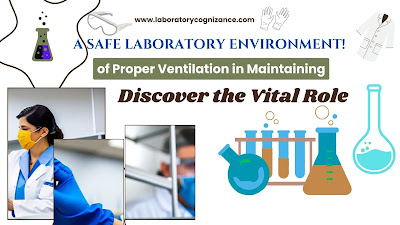“Breathe Easy: Uncovering the Critical Role of Ventilation in Lab Safety”

Proper ventilation is an essential element of lab safety
Many lab procedures involve the use of hazardous materials and chemicals, which can release harmful vapours & gases into the air. These vapours can accumulate & create a hazardous environment for lab personnel. Proper ventilation can help mitigate these risks & provide a safe working environment.
Ventilation is exchanging air within a space to maintain specific air quality
In the context of a lab, ventilation is used to remove or dilute harmful fumes & vapours that may be present. This is achieved through the use of mechanical ventilation systems such as fume hoods, exhaust fans, & air handling units.
Among the most popular ventilation systems used in laboratories is the fume hood
They are made to collect & eliminate dangerous fumes and vapours produced during laboratory processes. Fume hoods function by drawing air into the hood through an opening & then exhausting it through a mechanism. Fume hoods must be used correctly in order to be effective in creating a secure working environment. To make sure they are operating properly, they should be frequently maintained & inspected.
Exhaust fans & air handling units are also essential components of a lab ventilation system
They work by removing contaminated air from the lab & replacing it with fresh air from the outside. This process helps to dilute the concentration of hazardous materials in the air, reducing the risk of exposure for lab personnel.
Proper ventilation is critical for the safety of lab personnel
Without it, hazardous materials & chemicals can accumulate in the air & create a dangerous working environment. Exposure to these materials can lead to acute or chronic health effects, ranging from respiratory irritation to more severe outcomes such as cancer.
In addition to mechanical ventilation systems, there are also other best practices that can help improve ventilation in the lab. These include keeping lab doors & windows open, avoiding overcrowding of lab spaces, & ensuring that workspaces are clutter-free.

In conclusion
Proper ventilation is a critical component of lab safety. It helps to remove or dilute hazardous fumes & vapors, creating a safe working environment for lab personnel. Regular maintenance & inspection of ventilation systems are essential to ensure their effectiveness. By following best practices & implementing proper ventilation, labs can provide all personnel with a safe & healthy working environment.

7 thoughts on “The Role of Proper Ventilation in Lab Safety”